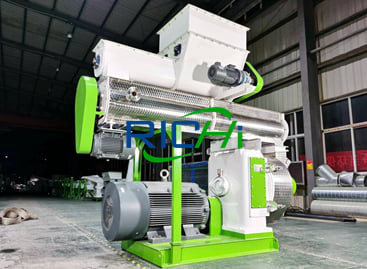How does straw compare to other pelletising technologies?
Contents |
[edit] How do straw pellet machines compare to other pelletising technologies?
Straw pellet makers stand as a distinctive player in the realm of pelletising technologies, each with its very own stamina as well as constraints. Allow's contrast straw pellet makers to various other pelletising innovations to comprehend their distinct qualities:
[edit] Straw Pellet Machines
Straw pellet mill is specialised devices created to convert straw and also farming deposits into portable pellets. Here's how they contrast to other pelletising innovations,.
- Dedicated Design: Straw pellet equipments are engineered particularly for refining straw, making certain optimal pellet top quality as well as performance.
- Economical: These devices are typically affordable because of their specialised nature, making them suitable for farmers and also small procedures.
- Attire Pellet Size: Straw pellet makers normally generate consistent pellets in regards to size and make-up, which is vital for regular burning.
- Basic Material Compatibility: They are fit for processing straw and also similar farming deposits, making the most of resource use.
Limitations:
- Single-Use Functionality: Pellet makers are tailored for handling straw, limiting their versatility contrasted to even more general pelletising innovations.
- Scale: While they appropriate for small operations, scaling up production might call for several equipments, enhancing functional intricacy.
[edit] Other Pelletising Technologies
Other pelletising modern technologies incorporate a broader range, catering to various raw materials and applications. Here's exactly how they compare:
Advantages
- Adaptability: General pelletising innovations can refine a wide range of feedstock, including wood, biomass, plastics, and extra.
- Massive Production: Some technologies, like ring pass away pellet mills, can efficiently handle large production, accommodating commercial needs.
- Personalisation: Depending on the innovation, pellet dimension as well as composition can usually be personalised for details applications.
- Research and Development: As elder technologies, they benefit from a longer background of research study, growth, and optimisation.
Limitations:
- Basic Material Variability: Processing diverse feedstock can result in variable pellet quality, depending upon the innovation's style and also arrangement.
- Greater Costs: Some modern technologies, especially those fit for massive manufacturing, could entail greater in advance and also operational prices.
- Handling Complexity: Certain modern technologies could need more complicated arrangement, maintenance, and also modifications to attain ideal efficiency.
[edit] Summary
In summary, straw pellet makers succeed at handling farming residues like straw, providing cost-efficient as well as efficient options for small procedures. On the other hand, various other pelletising modern technologies use adaptability and also scalability, accommodating numerous basic materials as well as production levels. The option in between straw pellet machines as well as various other technologies depends upon elements such as the particular resources, preferred pellet features, manufacturing scale, as well as budget plan restrictions.
[edit] Related articles on Designing Buildings
Featured articles and news
RTPI leader to become new CIOB Chief Executive Officer
Dr Victoria Hills MRTPI, FICE to take over after Caroline Gumble’s departure.
Social and affordable housing, a long term plan for delivery
The “Delivering a Decade of Renewal for Social and Affordable Housing” strategy sets out future path.
A change to adoptive architecture
Effects of global weather warming on architectural detailing, material choice and human interaction.
The proposed publicly owned and backed subsidiary of Homes England, to facilitate new homes.
How big is the problem and what can we do to mitigate the effects?
Overheating guidance and tools for building designers
A number of cool guides to help with the heat.
The UK's Modern Industrial Strategy: A 10 year plan
Previous consultation criticism, current key elements and general support with some persisting reservations.
Building Safety Regulator reforms
New roles, new staff and a new fast track service pave the way for a single construction regulator.
Architectural Technologist CPDs and Communications
CIAT CPD… and how you can do it!
Cooling centres and cool spaces
Managing extreme heat in cities by directing the public to places for heat stress relief and water sources.
Winter gardens: A brief history and warm variations
Extending the season with glass in different forms and terms.
Restoring Great Yarmouth's Winter Gardens
Transforming one of the least sustainable constructions imaginable.
Construction Skills Mission Board launch sector drive
Newly formed government and industry collaboration set strategy for recruiting an additional 100,000 construction workers a year.
New Architects Code comes into effect in September 2025
ARB Architects Code of Conduct and Practice available with ongoing consultation regarding guidance.
Welsh Skills Body (Medr) launches ambitious plan
The new skills body brings together funding and regulation of tertiary education and research for the devolved nation.
Paul Gandy FCIOB announced as next CIOB President
Former Tilbury Douglas CEO takes helm.
UK Infrastructure: A 10 Year Strategy. In brief with reactions
With the National Infrastructure and Service Transformation Authority (NISTA).























